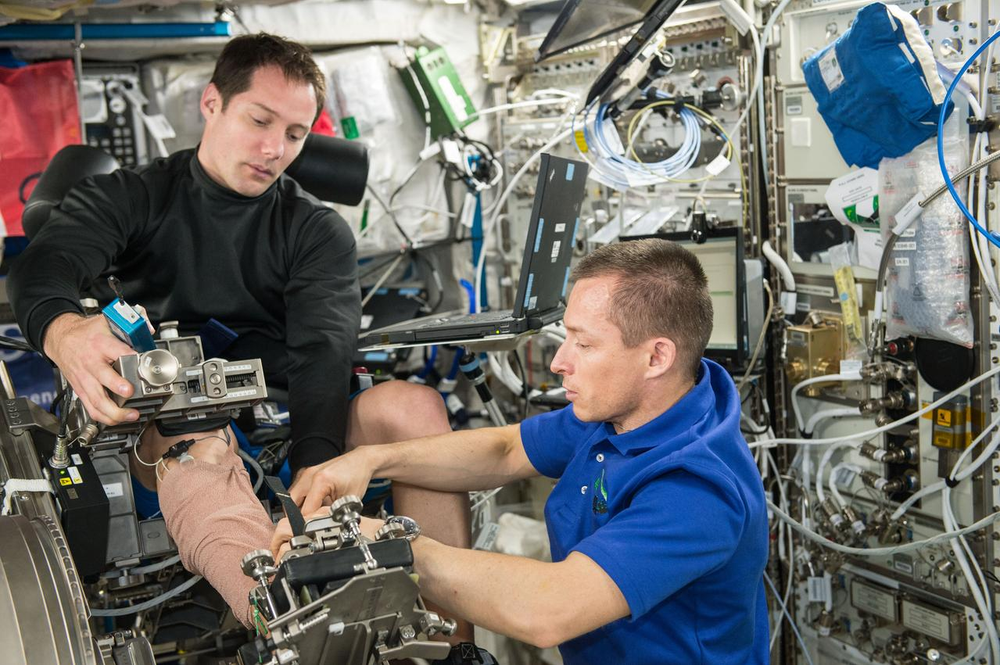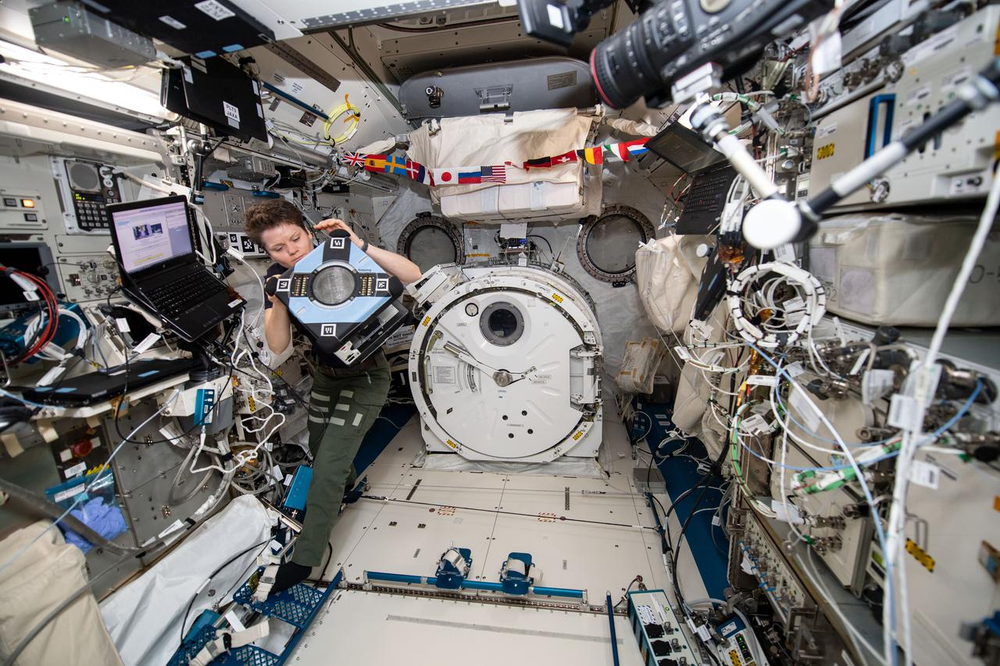Station Science Top News: June 28, 2024
Researchers reanalyzed data from muscle biopsies of two astronauts and found similar changes in mitochondrial proteins and the antioxidant response despite very different levels of physical activity. This suggests that radiation and other oxidative stress sources are the root cause of skeletal muscle mitochondrial damage, rather than amount of activity. These findings indicate that countermeasures to preserve muscle performance may need to target the antioxidant response and its correlation to physical activity.
The ESA’s (European Space Agency) Sarcolab analyzed the lower calf muscle for changes in structural and chemical properties during spaceflight and bedrest. Spaceflight causes atrophy and loss of strength in skeletal muscle and severe effects on mitochondria, cell organelles involved in the production of energy and cell growth. Researchers decided to reanalyze data from the investigation to examine the potential relationship between muscle disuse and mitochondria, which remains controversial.

***
Researchers found that the mineral supplement amorphous calcium carbonate (ACC) enhanced differentiation of human primary muscle and bone-forming cells. These findings support use of ACC as part of preventative measures to preserve bone and muscle on future missions and in treatments for bone loss on Earth.
Microgravity causes changes in the metabolism of muscles and bones that lead to muscle atrophy and loss of bone density resembling conditions from extended periods of immobilization on Earth. Experiment Cube #15 Mission 2 included an investigation evaluating whether ACC enhances differentiation and proliferation of bone forming cells and muscle cells in actual microgravity. ACC, a nanostructured biomaterial found in natural organisms, is more soluble and bioavailable than other calcium supplements.
***
Researchers demonstrated multiple techniques for safe, autonomous navigation of robotic flyers in complex dynamic environments, including sampling-based global planning using system dynamics, model learning for on-orbit reconfigurations, and robust tracking control in the presence of model uncertainty. Results contribute to the development of software and hardware for autonomous robotic construction, satellite retrieval, and repair tasks on future missions.
ReSWARM used the station’s Astrobees to demonstrate autonomous robotic activities such as assembly of structures and moving cargo and to test coordination among multiple robots, robots and cargo, and robots and the environment in which they operate. The ReSWARM navigation software and hardware could be incorporated into the growing list of on-orbit, close-proximity robotic applications.








